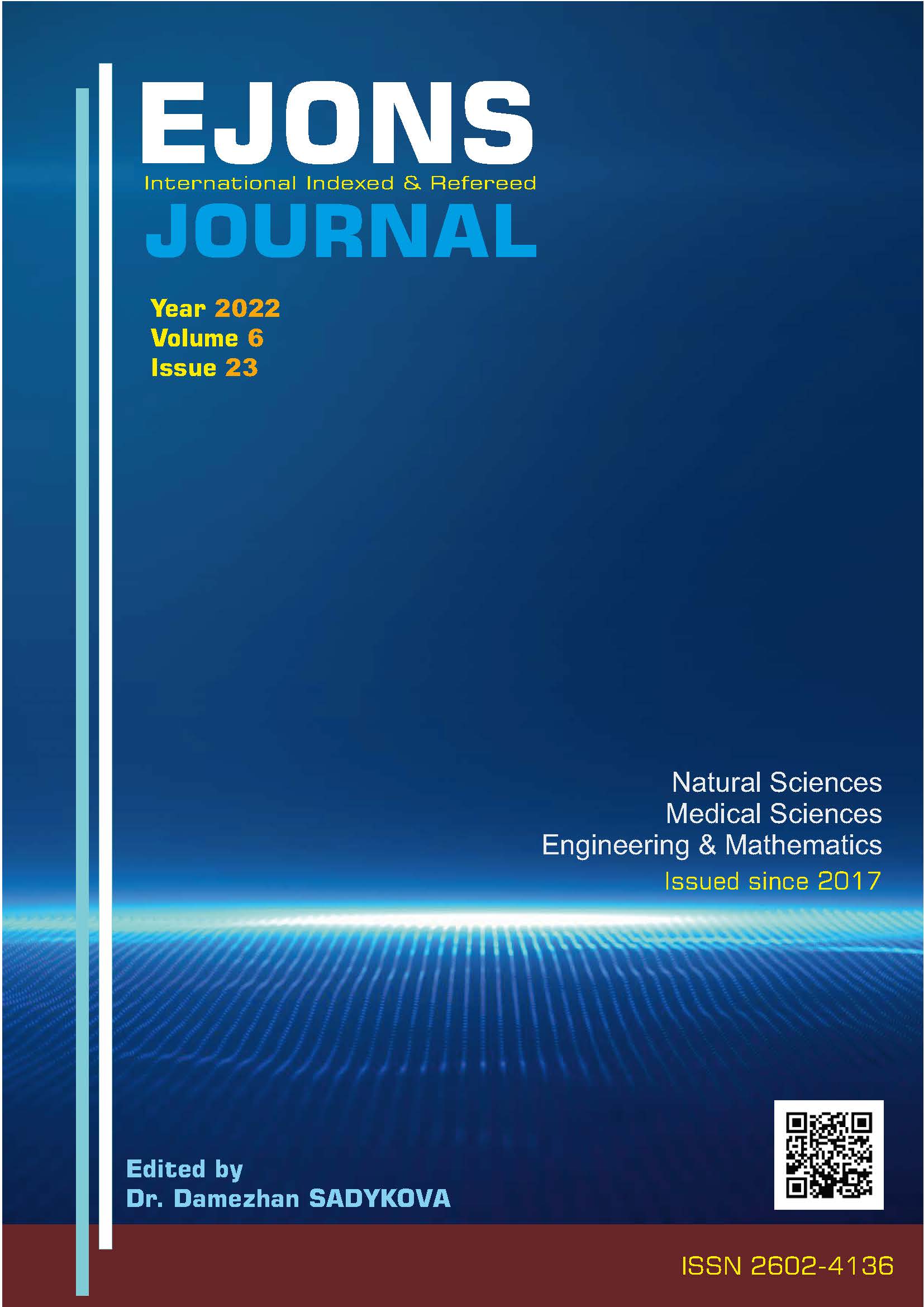DOES SARS-COV2 INFECTION CHANGE THE LEVEL OF FIBRINOGEN AT PREGNANCY?
SARS-COV2 INFECTION AND THE LEVEL OF FIBRINOGEN
DOI:
https://doi.org/10.5281/zenodo.7496487Abstract
Introduction: Fibrinogen level constitutes an important step in the coagulation system. Excessive activation of the coagulation system increases the risk of thromboembolism. This study was planned to compare the fibrinogen levels between pregnant women with Covid-19 and healthy pregnant women and to plan follow-up and treatment against the risk of thromboembolism.
Materials and Methods: 152 pregnant women who were in the second trimester and met the criteria were included in the study. According to the Covid PCR test results, the pregnant women were divided into two groups.
Results: A statistically significant difference was found in terms of serum fibrinogen level between Covid PCR positive and negative groups (p;0.002). The fibrinogen level of the Covid 19 positive pregnant women was 461.32±68.18 mg/dl, and the Covid 19 negative pregnant women had 431.64±119.35 mg/dl. Fibrinogen level was found to be higher in pregnant women who had Covid 19. There was no statistical difference between the groups in terms of age, BMI, gestational week, number of gravida, parity and number of abortions (p>0.05).
Conclusion: In our study; It has been determined that Covid 19 infection increases the fibrinogen level of pregnant women in the second trimester. Fibrinogen level may need to be evaluated separately in the follow-up and treatment of this patient group, and more care should be taken in this patient group in terms of the already increased risk of thrombo-embolism due to pregnancy.
References
Abbassi-Ghanavati, M., Greer, L. G., & Cunningham, F. G. (2009). Pregnancy and laboratory studies: a reference table for clinicians. Obstetrics & Gynecology, 114(6), 1326-1331.
Chen, N., Zhou, M., Dong, X., Qu, J., Gong, F., Han, Y., . . . Wei, Y. (2020). Epidemiological and clinical characteristics of 99 cases of 2019 novel coronavirus pneumonia in Wuhan, China: a descriptive study. The Lancet, 395(10223), 507-513.
Colling, M. E., & Kanthi, Y. (2020). <? covid19?> COVID–19-associated coagulopathy: An exploration of mechanisms. Vascular Medicine, 25(5), 471-478.
Ditschuneit, H. H., Flechtner-Mors, M., & Adler, G. (1995). Fibrinogen in obesity before and after weight reduction. Obes Res, 3(1), 43-48. doi:10.1002/j.1550-8528.1995.tb00119.x
Greer, I. A., & Nelson-Piercy, C. (2005). Low-molecular-weight heparins for thromboprophylaxis and treatment of venous thromboembolism in pregnancy: a systematic review of safety and efficacy. Blood, 106(2), 401-407.
Harenberg, J., & Favaloro, E. (2020). COVID-19: progression of disease and intravascular coagulation–present status and future perspectives. Clinical Chemistry and Laboratory Medicine (CCLM), 58(7), 1029-1036.
Jamieson, D. J., Theiler, R. N., & Rasmussen, S. A. (2006). Emerging infections and pregnancy. Emerging infectious diseases, 12(11), 1638.
Kadir, R. A., Kobayashi, T., Iba, T., Erez, O., Thachil, J., Kazi, S., . . . Othman, M. (2020). COVID‐19 coagulopathy in pregnancy: Critical review, preliminary recommendations, and ISTH registry—Communication from the ISTH SSC for Women’s Health. Journal of Thrombosis and Haemostasis, 18(11), 3086-3098.
Kollias, A., Kyriakoulis, K. G., Stergiou, G. S., & Syrigos, K. (2020). Heterogeneity in reporting venous thromboembolic phenotypes in COVID‐19: methodological issues and clinical implications. British journal of haematology, 190(4), 529-532.
Liu, Y.-C., Kuo, R.-L., & Shih, S.-R. (2020). COVID-19: The first documented coronavirus pandemic in history. Biomedical journal, 43(4), 328-333.
Machlus, K. R., Cardenas, J. C., Church, F. C., & Wolberg, A. S. (2011). Causal relationship between hyperfibrinogenemia, thrombosis, and resistance to thrombolysis in mice. Blood, The Journal of the American Society of Hematology, 117(18), 4953-4963.
Manten, G. T., Franx, A., Sikkema, J., Hameeteman, T. M., Visser, G. H., de Groot, P. G., & Voorbij, H. A. (2004). Fibrinogen and high molecular weight fibrinogen during and after normal pregnancy. Thrombosis research, 114(1), 19-23.
Sultan, A. A., West, J., Tata, L. J., Fleming, K. M., Nelson‐Piercy, C., & Grainge, M. J. (2012). Risk of first venous thromboembolism in and around pregnancy: a population‐based cohort study. British journal of haematology, 156(3), 366-373.
Tang, N., Li, D., Wang, X., & Sun, Z. (2020). Abnormal coagulation parameters are associated with poor prognosis in patients with novel coronavirus pneumonia. Journal of Thrombosis and Haemostasis, 18(4), 844-847.
Thachil, J., Tang, N., & Gando, S. (2020). ISTH interim guidance on recognition and management of coagulopathy in COVID-19. 18(5), 1023-1026. doi:10.1111/jth.14810
Yang, X., Yu, Y., Xu, J., Shu, H., Liu, H., Wu, Y., . . . Yu, T. (2020). Clinical course and outcomes of critically ill patients with SARS-CoV-2 pneumonia in Wuhan, China: a single-centered, retrospective, observational study. The Lancet Respiratory Medicine, 8(5), 475-481.
Zambrano, L. D., Ellington, S., Strid, P., Galang, R. R., Oduyebo, T., Tong, V. T., . . . Gilboa, S. M. (2020). Update: characteristics of symptomatic women of reproductive age with laboratory-confirmed SARS-CoV-2 infection by pregnancy status—United States, January 22–October 3, 2020. Morbidity and Mortality Weekly Report, 69(44), 1641.
Downloads
Published
How to Cite
Issue
Section
License
Copyright (c) 2022 EJONS INTERNATIONAL JOURNAL

This work is licensed under a Creative Commons Attribution-NonCommercial 4.0 International License.


